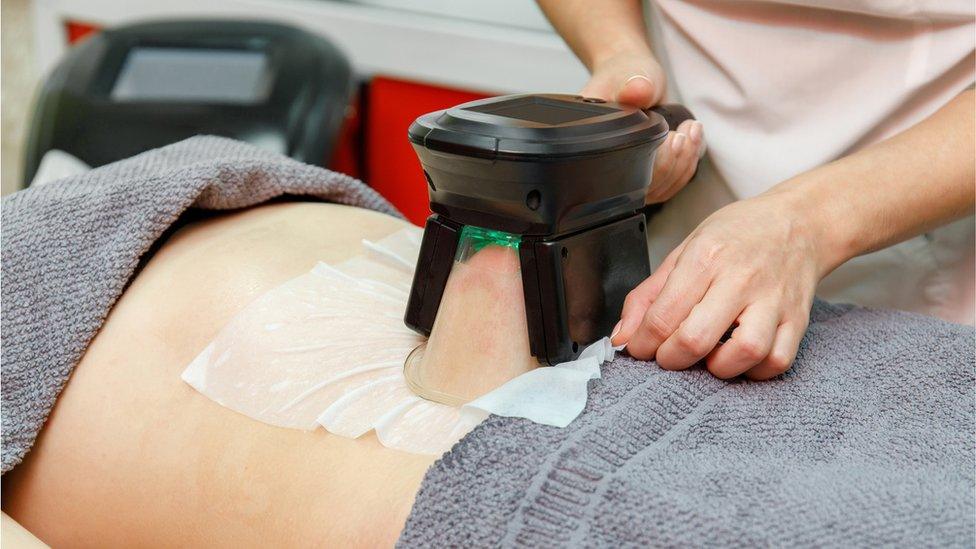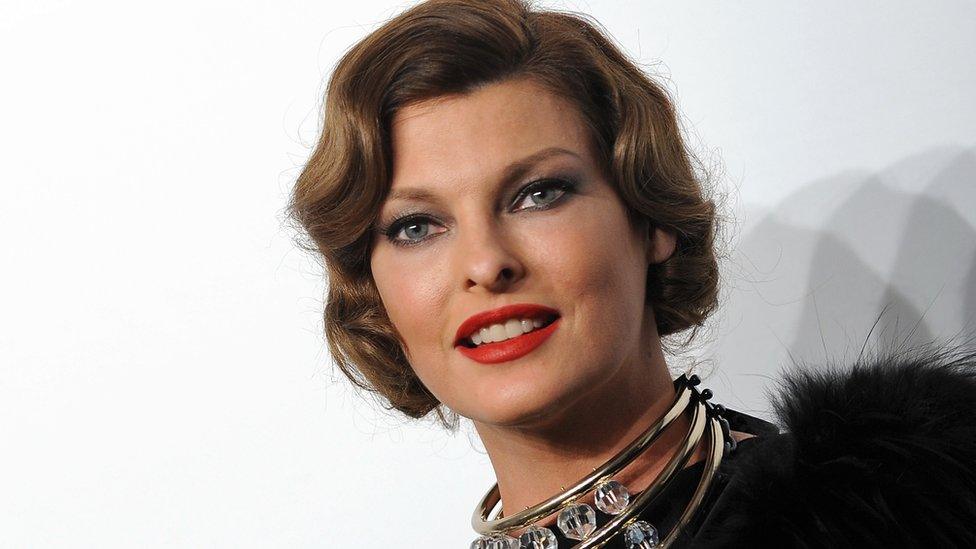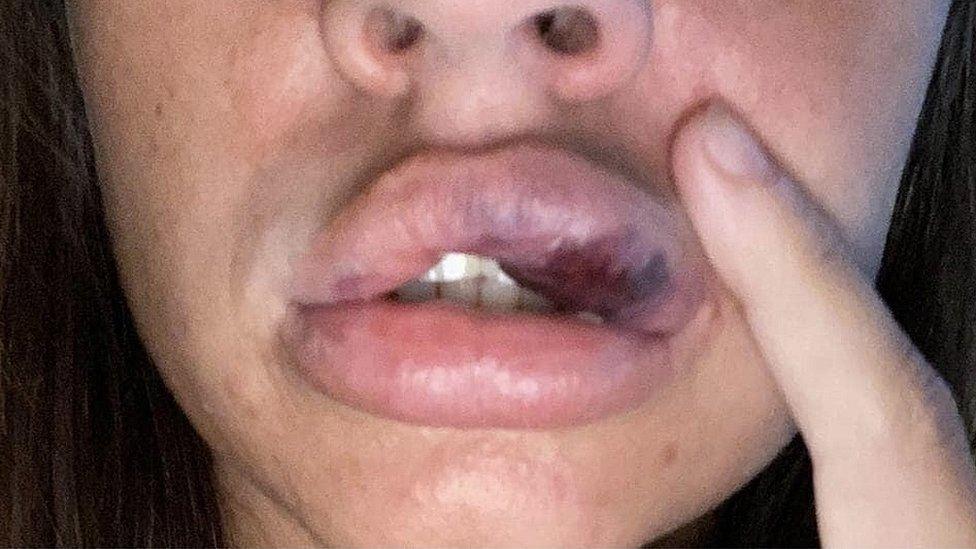What is fat freezing and what are the risks?
- Published

Unwanted fat is frozen in a clamp during cryolipolysis, a form of body sculpting
Supermodel Linda Evangelista says she has been left "permanently deformed" by a fat reduction procedure which went wrong.
The non-surgical cosmetic procedure uses freezing temperatures to destroy stubborn fat and rid it from the body - but there are risks.
How does it work?
The cosmetic treatment is based on a technique called cryolipolysis, where fat cells are destroyed by cooling them to very low temperatures.
Fatty bulges, which can't be got rid of through diet or exercise alone, are the target.
They tend to be located under the chin, around the thighs, the abdomen, back or upper arms.
When placed in a clamp, attached to a machine and cooled, the fat in these areas becomes damaged and over a few weeks the body absorbs the damaged cells, reducing the fat.
The treatment has become popular because it's relatively quick, doesn't involve surgery and is an alternative to liposuction, when fat is sucked out from under the skin - usually under general anaesthetic.
But it is not for everyone - it is not suitable for people who are obese and want to lose weight, for example - and the effects can be mild.
Are there risks?
"People think non-surgical is safer - but that's not necessarily the case," says Prof Ash Mosahebi, plastic surgeon and a member of the British Association of Aesthetic Plastic Surgeons.
There are also risks - as there are with every procedure, he says.
One of the known rare side effects is that instead of the fat dissolving when frozen, it can increase in size.
This is called paradoxical adipose hyperplasia and, although it's not clear why this can happen, it means fat cells are encouraged to grow, creating the opposite effect to the one intended.
Fifty-six-year-old Evangeslista said she had undergone two painful surgeries to correct the problem which were "unsuccessful" and left her "brutally disfigured".
Other more temporary side effects include numbness, bruising, itching and stinging.
Any advice?
Because non-doctors are able to offer the fat-freezing procedure, it is a good idea to find out as much as you can before opting for the treatment.
Prof Mosahebi says it is important to choose someone who is experienced, trustworthy and using good quality equipment to give you the right advice, such as a qualified plastic surgeon.
"It's important to be fully informed, know the limitations and the risks," he says.
The technique, which is branded as CoolSculpting, is currently available in many clinics and spas across the UK, and around the world.
Costs vary depending on the number of treatments.
Related topics
- Published23 September 2021

- Published21 July 2021

- Published23 April 2021

- Published23 January 2021
